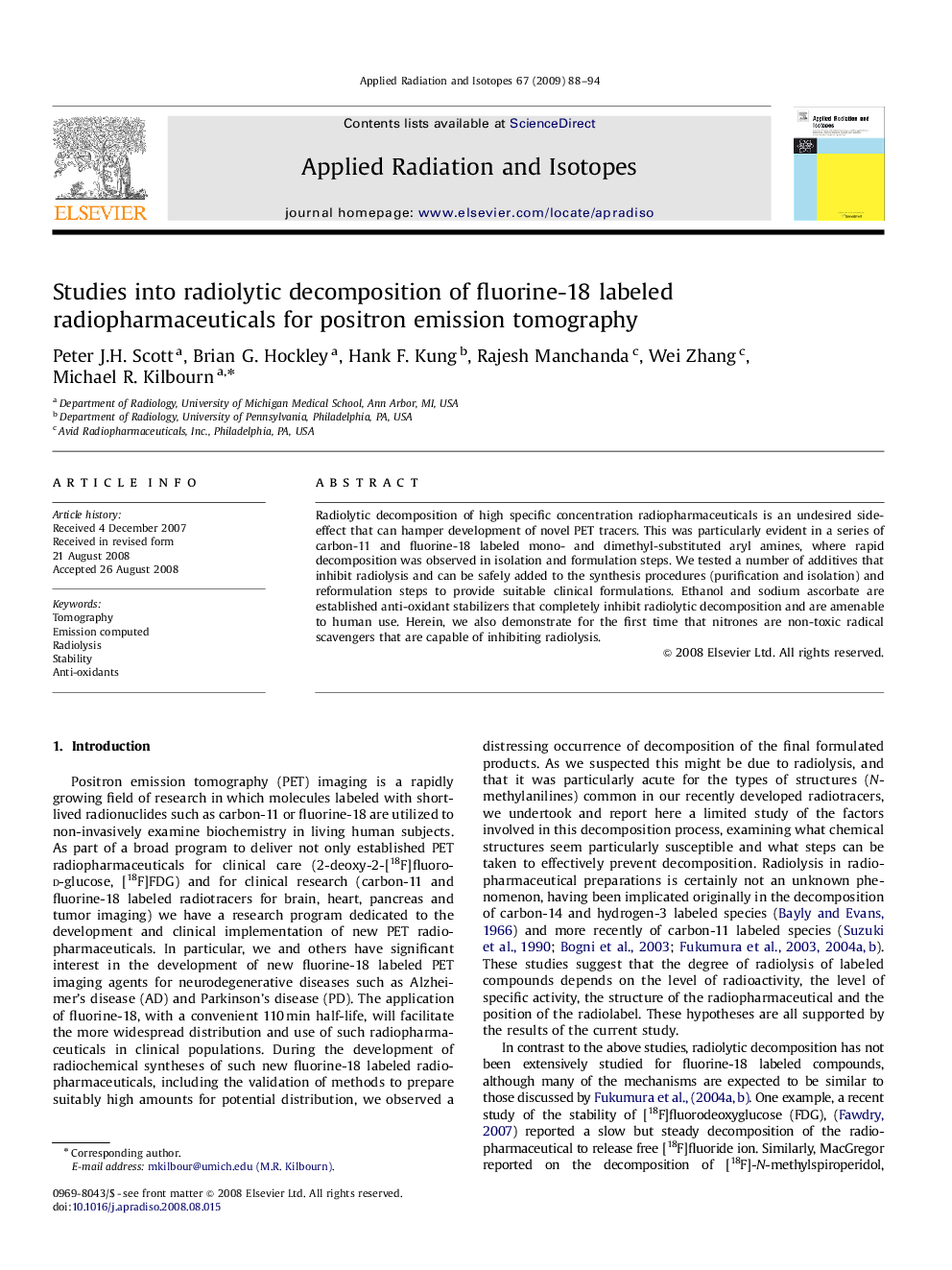| Article ID | Journal | Published Year | Pages | File Type |
|---|---|---|---|---|
| 1876796 | Applied Radiation and Isotopes | 2009 | 7 Pages |
Radiolytic decomposition of high specific concentration radiopharmaceuticals is an undesired side-effect that can hamper development of novel PET tracers. This was particularly evident in a series of carbon-11 and fluorine-18 labeled mono- and dimethyl-substituted aryl amines, where rapid decomposition was observed in isolation and formulation steps. We tested a number of additives that inhibit radiolysis and can be safely added to the synthesis procedures (purification and isolation) and reformulation steps to provide suitable clinical formulations. Ethanol and sodium ascorbate are established anti-oxidant stabilizers that completely inhibit radiolytic decomposition and are amenable to human use. Herein, we also demonstrate for the first time that nitrones are non-toxic radical scavengers that are capable of inhibiting radiolysis.
